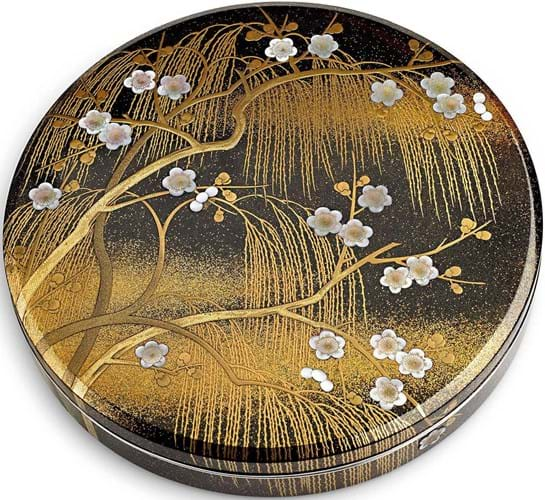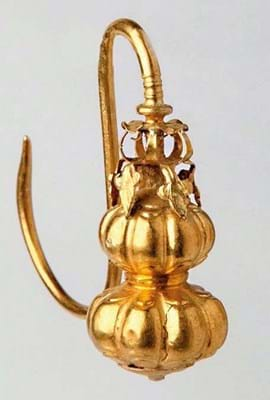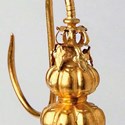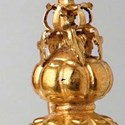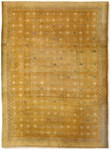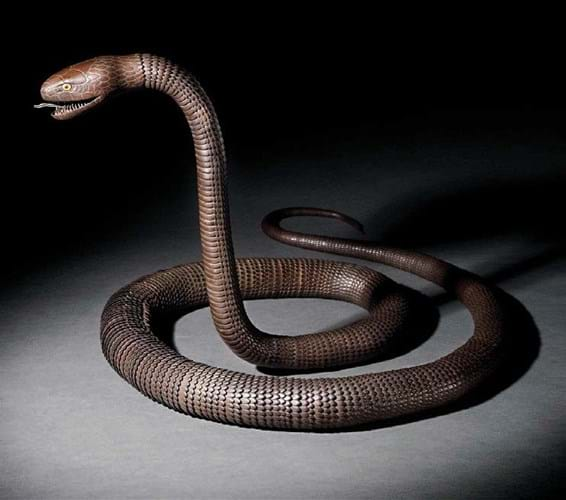
There are three finalists in both sections: the Antiques Trade Gazette Award for the Outstanding East Asian Work of Art from an Auction House; and the Apollo Award for the Outstanding East Asian Work of Art from a Dealer. The winners are announced this week.
AUCTION HOUSES
SOTHEBY’S
An iron jizai okimono of a snake (pictured top)
At 10ft (3.03m) long this jizai okimono created in the last decades of Edo-period Japan (1603-1868) is of exceptional size, full of detail and is signed under the hinged jaw Tensho Ni-Seinen Myochin Sonshun Saku.
The Myochins were a distinguished family of samurai armourers who adapted their skills to create the moveable scales and articulated limbs of jizai okimono, many of which were exported to the West.
It has a guide of £70,000-100,000 in Sotheby’s sale of Fine Japanese Art on November 3.
BONHAMS
A large court painting of ladies playing go, Yongzheng or Qianlong
This Court painting dates from c.1730s, the cusp of the Yongzheng and Qianlong periods. Measuring an impressive 5ft 1in (1.55m) wide x 2ft 3in (99cm) high, it is notable for the striking similarity of style with the famous Screen of the Twelve Beauties at Leisure, in the Qing Court Collection in the Palace Museum, Beijing, and may have indeed been executed by the same court artists.
It comes for sale by descent from ‘a distinguished Italian private collection formed c.1930s-40s’ with an estimate of £60,000-80,000 at Bonhams’ sale of Fine Chinese Art on November 5.
CHRISTIE’S
A pair of gold and silver inlaid bronze chariot fittings, Eastern Zhou period, c.3rd or 4th century BC

A pair of gold and silver inlaid bronze chariot fittings, Eastern Zhou period, c.3rd or 4th century BC - estimate £600,000-1m in Christie’s sale of Important Chinese Art on November 3.
The chariots for which these magnificent fittings were made first appeared during the Zhou dynasty for the use of kings, consorts, and other aristocrats.
It is possible that these fittings, cast in the zoomorphic form of a three-clawed dragon pursuing a phoenix, were made for an emperor, which might explain their unusually large size and lavish decoration. It was from around this time, to the very end of the dynastic period, that the dragon (emperor) and phoenix (empress) would be symbols of imperial power.
The 10in (26cm) fittings have a provenance back to CT Loo, Paris, in 1930 and were subsequently owned by collectors including the Marquis de Ganay (Paris) and Stephen Junkunc III (Chicago).
They are estimated at £600,000-1m in Christie’s sale of Important Chinese Art on November 3.
DEALERS
SIMON PILLING
A Showa lacquer writing box by Hiiraishi Takashi (1910-80)
This box from the 1930s adopts modern and stylised interpretations of traditional Japanese themes. To the exterior are a weeping willow and plum blossoms executed using takamakie and kirikane inlay techniques.
Inside are the Seven Autumn grasses. It holds a silver chrysanthemum water-dropper, suiteki and inkstone.
The artist produced this work before changing his name to Hiiraishi Kosho c.1940. He worked as a professor at the Kyoto Municipal School of Arts and Crafts and went on to receive the Kyoto Municipal Order of Cultural Merit for his work in lacquer ware.
MICHAEL GOEDHUIS
Porte de la Paix Céleste I (2019) by Li Chevalier
Li was brought up during the Cultural Revolution and recruited by the elite Chinese Army Opera Orchestra, through which she met her husband, a French diplomat. The couple left China for Paris in 1984 and Li spent the following years studying at the Sorbonne and travelling in Italy. Informed by her earlier experiences, her paintings exhibit cross-cultural influences.
For example, in this contemporary 4ft 11in (1.5m) square ink and mixed-media painting, she combines Chinese ink with canvas and incorporates other mixed-media elements such as sand and grit.
SUE OLLEMANS
A pair of 16th century gold double-gourd and lotus-leaf earrings
These earrings would have been worn by a noble woman during the Ming dynasty, as recorded in the Tianshui bingshan lu.
Each one was made by folding a beaten gold sheet into two globular sections with faceted sides and mounted between the lotus petals.
Gold versions of the shape have been found mostly in the provinces of Liaoning, Gansu, Hangshu, Jiangshu and Sichuan.



